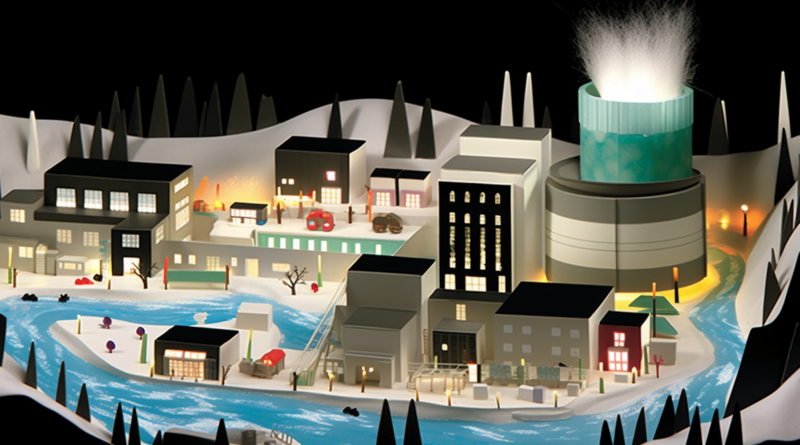Nuclear Energy, Carbon Capture, & More: Questions From Smart Energy Webinar
While south of the equator and west of the international date line, I had the opportunity to talk with a few hundred participants in an Australian Smart Energy Council webinar. It was organized to exploit my unusual timezone alignment with Oz as I spend a few weeks in New Zealand as a digital nomad.
The organizer Steve Blume, former President of the Council, and I thought it would be useful to answer most of the dozens of questions in articles and share with the registrants as well. This is the sixth and last of a few articles with responses, which will be aggregated and shared by the Council as well for participants. The first article was on aviation and maritime shipping questions, the second covered biofuels and HVDC , the third dealt with hydrogen, the fourth with fossil fuels, and the fifth on aspects of politics and geopolitics.
The framing of my prepared remarks was the Radical Electrification of Transportation. I’ve published a lot on the subject as I’ve dug through most modes over the past 15 years.

To summarize my presentation, all ground transportation will electrify. That’s cars, trucks, buses, utility vehicles, trains, and mining vehicles. All inland shipping and two-thirds of short sea shipping will electrify, with only the longest routes requiring biofuels. Shipping and rail will also drop in tonnage due to removal of bulk fossil fuels from loads. Aviation will be disrupted by electric regional air mobility, autonomous flight, and digital air traffic control, and only trans-oceanic flights will require biofuels in 50 years.
That means the billions of tons of fossil fuels per year requirement for extraction, processing, refinement, and distribution are going away and being replaced by tens of millions of tons of technology metals such as lithium and cobalt, as well as a few hundred million tons of biofuels for aviation and maritime shipping. That’s all very doable.
The prepared remarks skimmed over all of that in 30 minutes or so, leaving far too little time for questions, and so I’ve chosen to respond to most of them in writing.
Do you see a role for nuclear energy?
Yes, of course. Not a big one, but it has a role. After all, China is building a lot of it, although vastly more real TWh of wind, solar and hydro. Its nuclear program peaked in 2016-2018 and has been limping along with 1-3 reactors a year since, while wind and solar continue to increase annual deployments.
France remains committed to it, kind of, this year. A few years ago they were backing away, now they are backing toward it despite so much of it being offline and hence contributing to the energy crisis. South Korea has reversed its plans to eliminate its nuclear fleet, which is worrisome because so many of them were built with sub-standard components as part of a massive governmental and corporate fraud problem.
The biggest program for nuclear by far, however, is China’s, and as noted, it’s limping, not running along. Other countries are mostly delaying action by focusing on it. The USA’s fleet is heading for rapid sunsetting just as they are finally getting their renewables program into high gear, and maybe even overcoming rich people’s aversion to offshore wind where they might see it from their ocean front estates and yachts.
And small modular reactors aren’t a solution. They forego the physics of big thermal generators but won’t be achieving the numbers necessary for significantly reduced per-unit costs. There will continue to be a market for uranium, but it won’t be growing massively.
I am concerned about Deep Sea Mining, do we have enough minerals on land? I don’t think we should mine the deep sea for minerals we need for the electrification movement.
Yes, we do have enough minerals on land. I would recommend reading Klinger’s Rare Earth Frontiers to get a sense of why we aren’t mining on land as much as we should. Yes, we should be concerned about poorly regulated and very hard to monitor seabed mining, but we should probably be more concerned with massive trawlers that are destroying seabed ecosystems today, not venture-capital backed firms likely to implode.
For cement decarbonization, 60% of the emissions are process-related. What is the outlook to decarbonize them, and what are the market drivers?
Cement is the gray glue that holds our world together. And it’s 8-10% of the global carbon problem. There are three sources of significant emissions. The first is the heat for the limestone kiln. That’s entirely possible to shift to electricity, as the temperatures aren’t hard.
The second is the CO2 that bakes off the limestone as it turns into quicklime, releasing carbon, which binds with oxygen from the atmosphere. That’s tougher to eliminate without replacing the limestone-to-quicklime process with electrochemical processes, which many are working on. There are actually many solutions in this space.
This is probably one of the places where it makes sense to capture and sequester CO2, although that has to compete with the other solutions economically.
The third is the rotating clinker drum with its jet of natural gas that heats the quicklime and clay into clinker, a ceramics process. Even that is feasible to replace, either with a jet of biomethane or an electric plasma jet.
Technically, none of these problems are actually that hard. It’s the economic feasibility of them that’s the problem.
But decarbonized cement is only 2% of the cost of a bridge, as a recent example pointed out. Pricing carbon intensive cement so that it’s more expensive than alternatives is just politics and policies, not an economic death knell. Studies have found that engineers and architects are overusing cement to avoid the tiniest risk of construction liability, a suspenders and a belt practice that would change rapidly if cement were a more sensibly priced commodity.
The problems are more capex and the sunk cost fallacy. A cement plant is a US$500 million dollar piece of kit with a lifespan measured in decades. And those energy solutions can’t just be bolted onto most of the existing facility, for the most part. Biomethane jets instead of natural gas can be, but that requires a consistent and fairly high volume source of biomethane. As I noted for another question, I’m not a big fan of creating more methane intentionally.
What do you think will be the biggest challenges in implementing local value addition of resources in Australia? Resistance from offshore buyers? Local capability or other things?
There are a few. I don’t think offshore buyers will care if they get the end result more cheaply, but that does mean cutting out the middle party offshore. That’s just business.
Local capability in Australia is a concern, as I understand it without being deep on Australia’s industrial capacity. My information on Australia is light, but creating a modern sophisticated minerals processing capacity requires scale, capital, technology and a breadth of human engineers that Australia’s resource pool might have difficulties with. That, however, is something that can be addressed by inviting foreign partners in. China has all of that expertise and is increasingly outsourcing to other countries, so there’s likely a good path for a smart business person to establish a good partnership there.
It’s unclear to me if Australia has a hardcore skills training program for this in place. That would be a requirement, as well as upskilling the ancillary business and supply chain skills.
The biggest problem, I suspect, is the status quo billionaires who like shipping carbon-rich dirt overseas and dining on tenderized panda steaks with the profits. They bought an awful lot of politicians in Australia, one of whom proudly held up a lump of coal in Parliament if memory serves, much like America’s Inhofe held up a snowball to “prove” that climate change wasn’t real.
A large part of Australia’s establishment refuses to get the message that change is essential. That’s why they’ll likely not be part of Australia’s establishment in 20 or 30 years, and new ones will have taken their places. Be one of the new ones.
 Chip in a few dollars a month to help support independent cleantech coverage that helps to accelerate the cleantech revolution!
Chip in a few dollars a month to help support independent cleantech coverage that helps to accelerate the cleantech revolution!
What applications do you see for CCUS?
Very few. I expect it will have a play in cement manufacturing, but the scale of the CO2 problem is 40 billion tons annually and 1,000 billion tons historically, while the total carbon demand today is 230 million tons, a fraction of 1% of annual demand. And 90 million of those 230 million tons, by far the largest part, is for enhanced oil recovery. All of our big sequestration sites today are sequestering CO2 that they took out of the ground someplace else, and almost all of them are enhanced oil recovery sites.
Even cement has alternatives to CCUS, and has to compete economically with those alternatives.
What do you consider to be the viability of small modular nuclear reactors/electricity generation, possibly located adjacent to Australia’s large cities?
I don’t consider SMRs to be particularly viable. They forego the economies of making thermal generation as big as possible so are inherently less efficient and cost effective. They try to make up for that by building lots of them, but the numbers don’t add up in terms of Wright’s Law efficiencies.
Oh, and virtually all the designs require high-assay, low-enrichment fuel (HALEU) which is only supplied by Russia at present. Oops.
As for putting them next to Australian cities, that means that Australia, the state, the city, and the operator would have to establish about seven overlapping defensive rings of security around each SMR, when Australia has no commercial reactors operating at all. Most of the security for nuclear generation facilities is subsidized by various levels of government.
SMRs are like the AP1000 was 18 years ago, a faint hope by the global nuclear industry that they would find a way to consistently scale nuclear generation. But scaling nuclear generation, while it’s worked a few times, has always had a few characteristics in common which don’t exist in most places today.
The first is that it’s a national strategy initiative, and virtually always aligned with nuclear weapons capability. The second is that a single technology is chosen and dominates. The third is that the political system of the country permits the federal government to override local concerns and ram nuclear through, including budget slush funds for the inevitable overruns.
SMRs don’t have that condition anywhere. The only country that has close to those conditions is China, and it’s failing on the single technology front. That’s a big part of the reason why nuclear reactor roll-outs have flatlined at 1-3 per year since peaking at seven per year in 2016 and 2018. Meanwhile, wind, solar, and hydro are accelerating their deployments annually.
Always look at global examples for outside perspectives on scalability and economic viability. Don’t cherrypick. Renewables outcompete nuclear everywhere every time in the 21st Century unless ideology forces a nuclear win.
And so, the end of quick responses to the dozens of questions that participants in the webinar submitted. There was no time to answer them during the session, so I hope that participants find these answers here or on the Smart Energy Council website where they’ll be aggregated. I do love good questions, mostly because they help me flesh out my thinking on topics of interest to me, and often challenge me to have better supported and more nuanced positions. Thanks to all the participants in the webinar who took the time to craft and submit the questions.
Have a tip for CleanTechnica? Want to advertise? Want to suggest a guest for our CleanTech Talk podcast? Contact us here.
Latest CleanTechnica.TV Video

CleanTechnica uses affiliate links. See our policy here.

